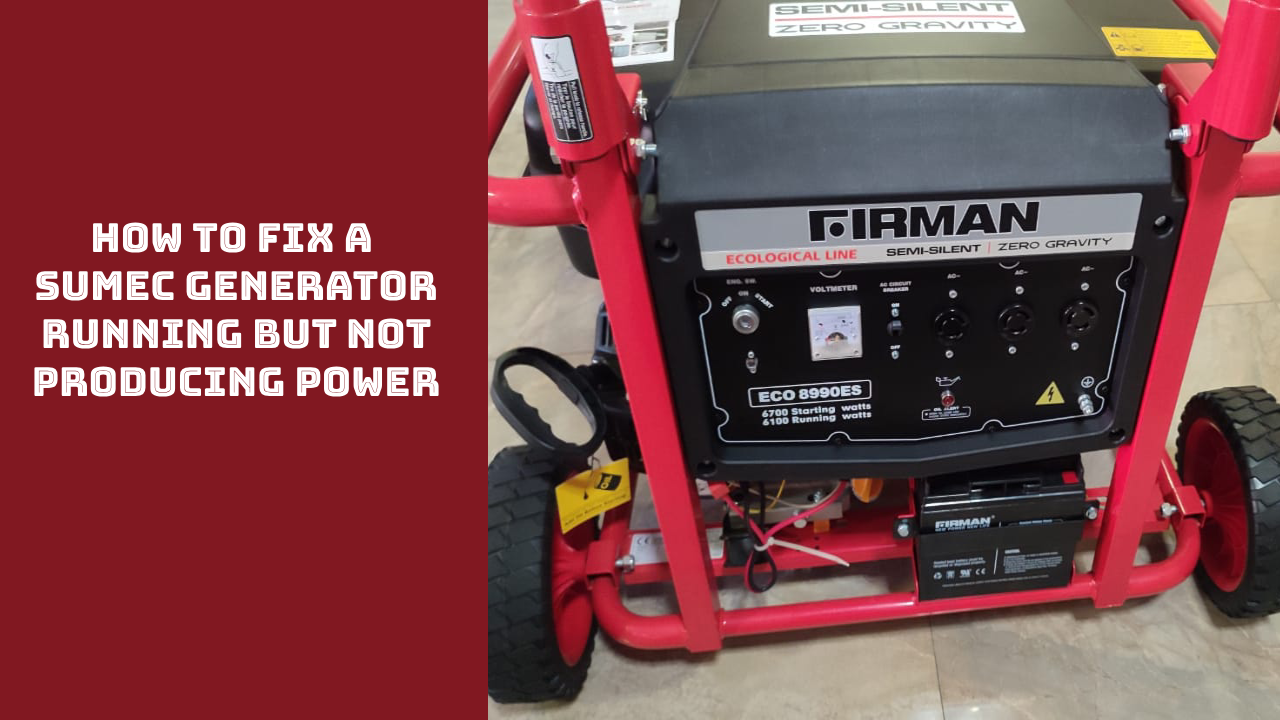Generators are necessary for many homes and businesses, providing emergency power during outages. They are instrumental in areas prone to power cuts or unreliable electricity supply.
However, when your reliable Sumec generator is running but not producing power, it can be a real cause for concern. Through the following passages, you will be guided on the essential steps to diagnose and rectify the problem at hand, ensuring your Sumec generator returns to its optimal performance.
There is something very important you need to know before diving into troubleshooting, it’s essential to understand what could be causing your Sumec generator to run without producing power.
The cause of this problem can be attributed to a multitude of factors, one of which is the depletion of residual magnetism, faulty connections, a defective automatic voltage regulator (AVR), or a problem with the alternator or stator. It could also be due to a defective circuit breaker or capacitor. Each of these issues requires a different approach to resolve.
Steps to Fix a Sumec Generator Running But Not Producing Power
There are several steps you need to go through in order to properly fix this issue. You should know that this may be caused by many things so it is safe to carefully go through this recommendation so that you can properly fix this problem and avoid it coming back again for any reason.
1. Check for Loss of Residual Magnetism
The most common reason for a generator to run without producing power is the decline of residual magnetism. Generators operate by the movement of electrical conductors through a self-created magnetic field. The magnetic field is created by converting some of the generator output voltage to direct current (D.C.) and feeding it into a coil to make an electromagnet.
The generator relies on residual magnetism, a small amount of magnetism left over from the last time the generator was running, to produce a small amount of electricity. This electricity is then used to create an electromagnet. However, if the generator loses its residual magnetism, it won’t produce any power at startup.
Causes of Residual Magnetism Loss
Residual magnetism loss can occur if the generator has not been used for a while, if it was running for too long without a load, or if a load was connected when the generator was shut off. It could also occur if the new generator has lost residual magnetism due to long-distance transportation vibration.
Preventing Residual Magnetism Loss
To prevent loss of residual magnetism, always run your generator with a load and disconnect the load before turning it off. If your generator has lost its residual magnetism, you can restore it by ‘field flashing’ tit.
2. Check for Poor Connections
Another thing to check is the connections. If your generator is running but not producing power, ensure all ports are clean from particles, debris, or blockages and that all connections are tight. This is an essential step in maximizing the reliability of your generator.
3. Check the Automatic Voltage Regulator (AVR)
The AVR is a circuit that balances and regulates the voltage output from the generator. If the AVR is faulty, it can result in no or low output. To test the AVR, try adjusting it to ensure it is not out of adjustment. If there is no change in the production after adjusting the AVR, consider replacing it.
4. Check the Alternator
By utilizing the residual magnetism present in the windings, the alternator is able to effectively charge the capacitor. Should the generator go unused for an extended duration, its magnetism may dissipate, thereby rendering the capacitor uncharged. If this occurs, the capacitor must ‘field flashed’ thereby restoring and the purpose is to recharge the rotor so that it can be excited again.
5. Check the Stator
The stator typically consists of three windings: two power windings and one winding used to either excite the rotor or charge the capacitor. If the stator is not producing power, the AVR is likely faulty and must be replaced.
6. Check the Circuit Breaker
The circuit breaker is the first to check if your generator engine is running but producing no or low output. The purpose of the breaker is to ensure safety by detecting and automatically switching off in the event of an electrical surge or overload. Testing the circuit breaker can help you determine if it is causing the problem.
7. Check the Capacitor
The capacitor performs a dual function of inducing voltage into the rotor and regulating the voltage. A faulty capacitor will lead to a decreased voltage output from the generator, as the energy produced will solely rely on the residual magnetism of the rotor. A multi-meter that can test capacitance is required to test a capacitor.
Conclusion
It is one important thing to swiftly identify and rectify the problem if your Sumec generator is running but not producing power. Whether it’s the loss of residual magnetism, poor connections, a faulty AVR, alternator, stator, circuit breaker, or capacitor, each problem has its unique solution.
Remember, it’s best to consult a professional if you need clarification on any of these steps or if the problem persists. This will ensure your generator is fixed correctly and ready to provide power.
